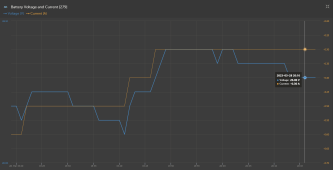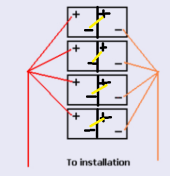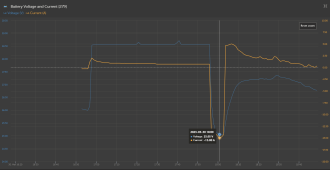Wait, NOCO Pro 50?
The same NOCO Pro50 that lists for $900? Man I gotta do my hobbies better like you ?
Were you charging that single 100ah sealed battery at 50a, or are you able to lower the charge current? SLA batteries have a high current limit, I don’t think they like to charge close to .5c
Sorry, if I were not living on SS and had a deep pocket of cash to spend, I might have money and time for hobbies. I think men should retire in their 20s when they have the money and strength to do hobbies, and then start working when they are about 30. Then, we could just work till be drop rather than wishin we were fishin but SS just doesn't leave extra for that.
Solar is not really my hobby. I love to do it and it is interesting but it is a necessity where we live. We are without grid power many times per year. Sometimes for more than a few week, but mostly only for a few days. The longest was about 3 weeks with 3ft of snow on the ground. I have a generator but it requires gasoline. When we have 2-4ft of snow and are home bound and the generator is out of gas, things are really rough. Our home is an all electric home. Heat, 680ft deep well, electric range, electric water heater. In the summer we have "Rolling Blackouts" when the grid power companies shut off the grid for hours to days when the temp is high and the humidity is low. They don't even want us to use generators because of fire danger and air quality.
We need electricity for medical stuff. Solar does not pencil out in Oregon. Not even close. No Sun 9 mos out of the year.
I need to keep the solar working and I run it to try to recover some of the money I put into it. I like the electronics since my degree was in electronics engineering. I was a design engineer at Tek for a few years and taught electronics, programming, and equipment repair and troubleshooting for Tek. Taught a couple of classes for Portland State. Was a Senior Software Development Engineer for Mentor Graphics for 10 year. Did IT work the rest of my employment days till I retired.
Actually, the NOCO is used to backfeed the battery bank when there isn't sun in the winter and the power is out. The NOCO runs off the generator along with the rest of the house. Then, at night when the generator is turned off, we have electricity from the bank of batteries to run lights and other needed stuff in the house. The batteries are not always charged by solar!
Solar is too expensive to be a hobby on SS. Have been without grid and gasoline in the dead of winter before and it is not fun. So, I use my education to help me create what we need. Never learned about solar cells in college. But then, that was over 50 years ago.!
Yeah, I know. Too much information. Oh, BTW, I bet your hobby, the 740GLE, cost more than my solar!

Mmmmm!






